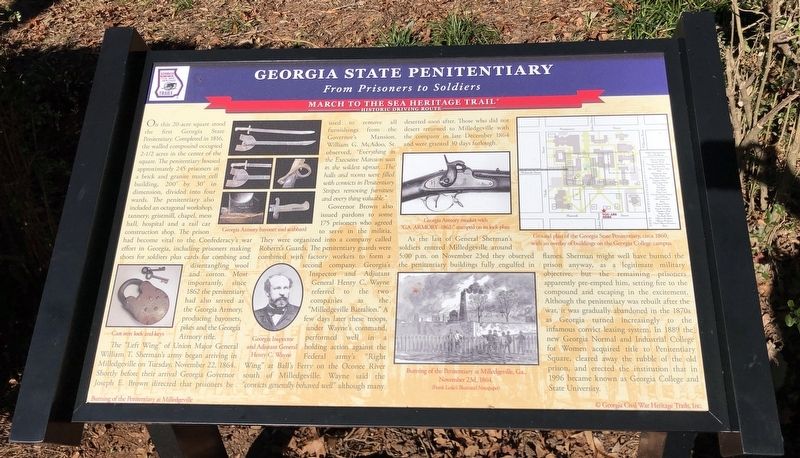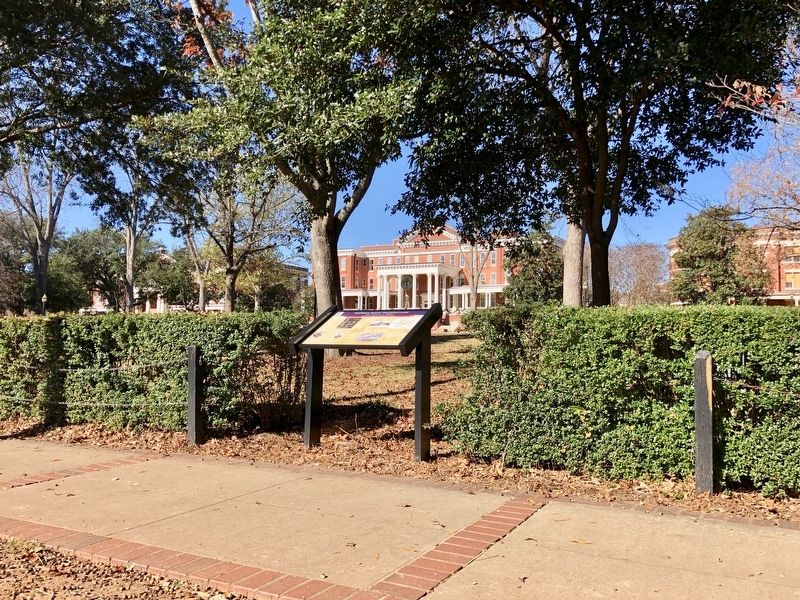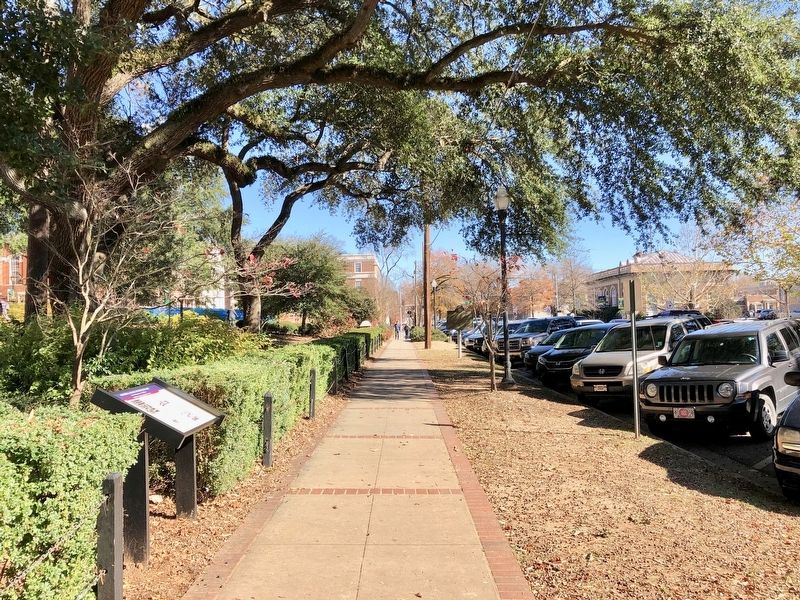Milledgeville in Baldwin County, Georgia — The American South (South Atlantic)
Georgia State Penitentiary
From Prisoners to Soldiers
— March to the Sea Heritage Trail —
The "Left Wing" of Union Major General William T. Sherman's army began arriving in Milledgeville on Tuesday, November 22, 1864. Shortly before their arrival Georgia Governor Joseph E. Brown directed that prisoners be used to remove all furnishings from the Governor's Mansion. William G. McAdoo, Sr. observed, "Everything in the Executive Mansion was in the wildest uproar...The halls and rooms were filled with convicts in Penitentiary Stripes removing furniture and every thing valuable."
Governor Brown also issued pardons to some 175 prisoners who agreed to serve in the militia. They were organized into a company called Roberts's Guards. The penitentiary guards were combined with factory workers to form a second company. Georgia's Inspector and Adjutant General Henry C. Wayne referred to the two companies as the "Milledgeville Battalion." A few days later these troops, under Wayne's command performed well in a holding action against the Federal army's "Right Wing" at Ball's Ferry on the Oconee River south of Milledgeville. Wayne said the "convicts generally behaved well" although many deserted soon after. Those who did not desert returned to Milledgeville with the company in late December 1864 and were granted 30 days furlough.
As the last of General Sherman's soldiers entered Milledgeville around 5:00 p.m. on November 23rd they observed the penitentiary buildings fully engulfed in flames. Sherman might well have burned the prison anyway, as a legitimate military objective, but the remaining prisoners apparently pre-empted him, setting fire to the compound and escaping in the excitement. Although the penitentiary was rebuilt after the war, it was gradually abandoned in the 1870s as Georgia turned increasingly to the infamous convict leasing system. In 1889 the new Georgia Normal and Industrial College for Women acquired title to Penitentiary Square, cleared away the rubble of the old prison, and erected the institution that in
1996 became known as Georgia College and State University.
[Photo captions]
Left top: Georgia Armory bayonet and scabbard
Left bottom: Cast iron lock and keys
Georgia Inspector and Adjutant Gemeral Henry C. Wayne
Middle top: Georgia Armory musket with "GA. ARMORY -1862-"stamped on its lock plate
Middle bottom: Burning of the Penitentiary at Milledgeville, GA., November 23d, 1864. (Frank Leslie's Illustrated Newspaper)
Right top map: Ground plan of the Georgia State Penitentiary, circa 1860, with an overlay of buildings on the Georgia College campus
Erected 2018 by Georgia Civil War Heritage Trails, Inc. (Marker Number L15.)
Topics and series. This historical marker is listed in these topic lists: Notable Places • War, US Civil. In addition, it is included in the Georgia Civil War Trails, and the Sherman’s March to the Sea series lists. A significant historical date for this entry is November 22, 1864.
Location. 33° 4.847′ N, 83° 13.807′ W. Marker is in Milledgeville, Georgia, in Baldwin County. Marker is on West Hancock Street (Georgia Route 49) west of North Wilkinson Street, on the right when traveling west. Located in front of the main campus of Georgia College. Touch for map. Marker is at or near this postal address: 231 West Hancock Street, Milledgeville GA 31061, United States of America. Touch for directions.
Other nearby markers. At least 8 other markers are within walking distance of this marker. Dr. Charles Holmes Herty (a few steps from this marker); Birthplace of Charles Holmes Herty (a few steps from this marker); Baldwin County Veterans Memorial (within shouting distance of this marker); The Allen Strain (within shouting distance of this marker); De Soto in Georgia (about 300 feet away, measured in a direct line); The Great Seal of Georgia (about 300 feet away); Great Seal of Georgia and the Unfinished Acts of the Legislature, 1864 (about 400 feet away); Tomlinson Fort House (about 500 feet away). Touch for a list and map of all markers in Milledgeville.
Also see . . . History of Georgia State Penitentiary at Milledgeville. (Submitted on December 7, 2018, by Mark Hilton of Montgomery, Alabama.)
Credits. This page was last revised on December 7, 2018. It was originally submitted on December 7, 2018, by Mark Hilton of Montgomery, Alabama. This page has been viewed 505 times since then and 44 times this year. Photos: 1, 2, 3. submitted on December 7, 2018, by Mark Hilton of Montgomery, Alabama.


